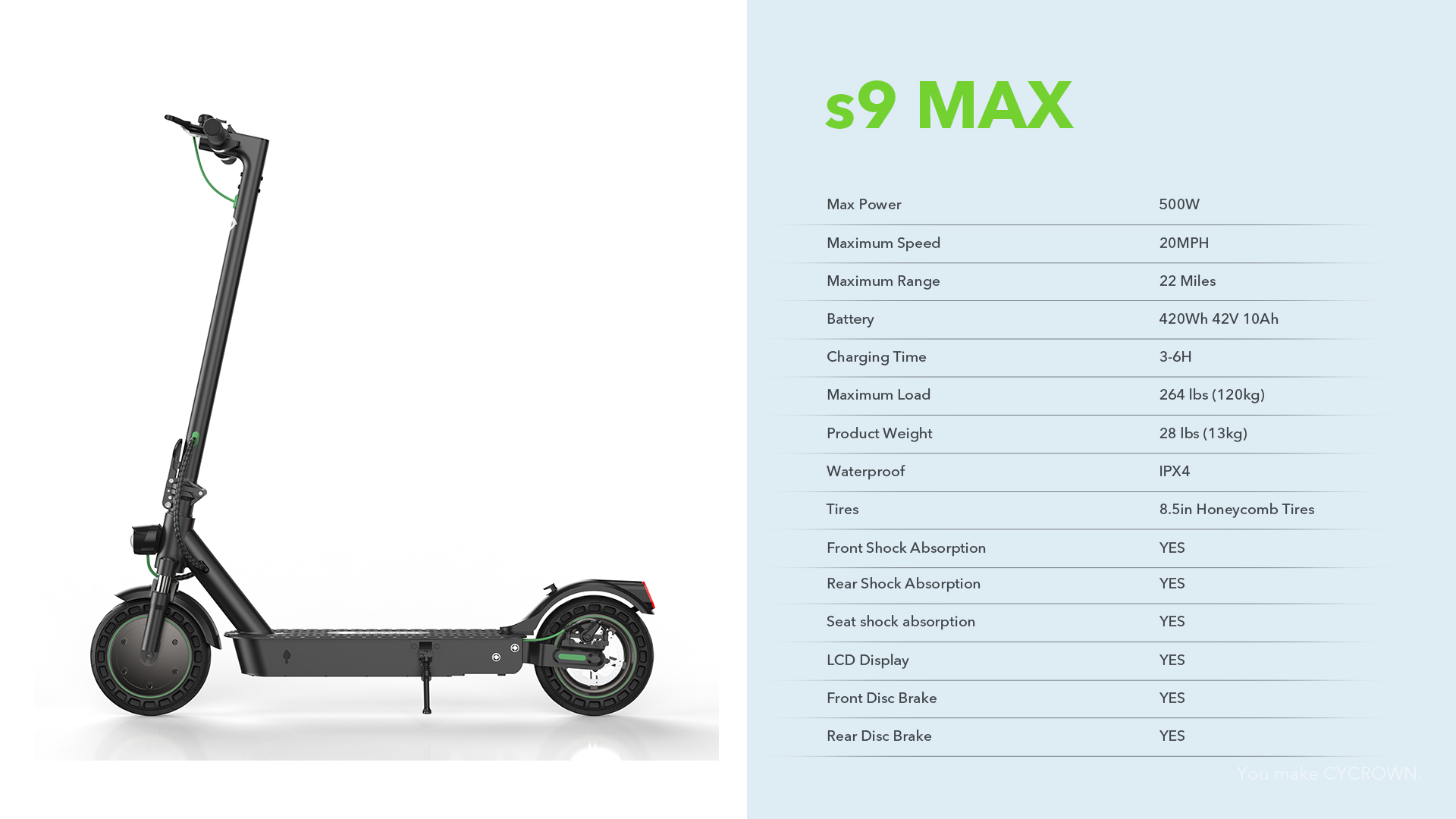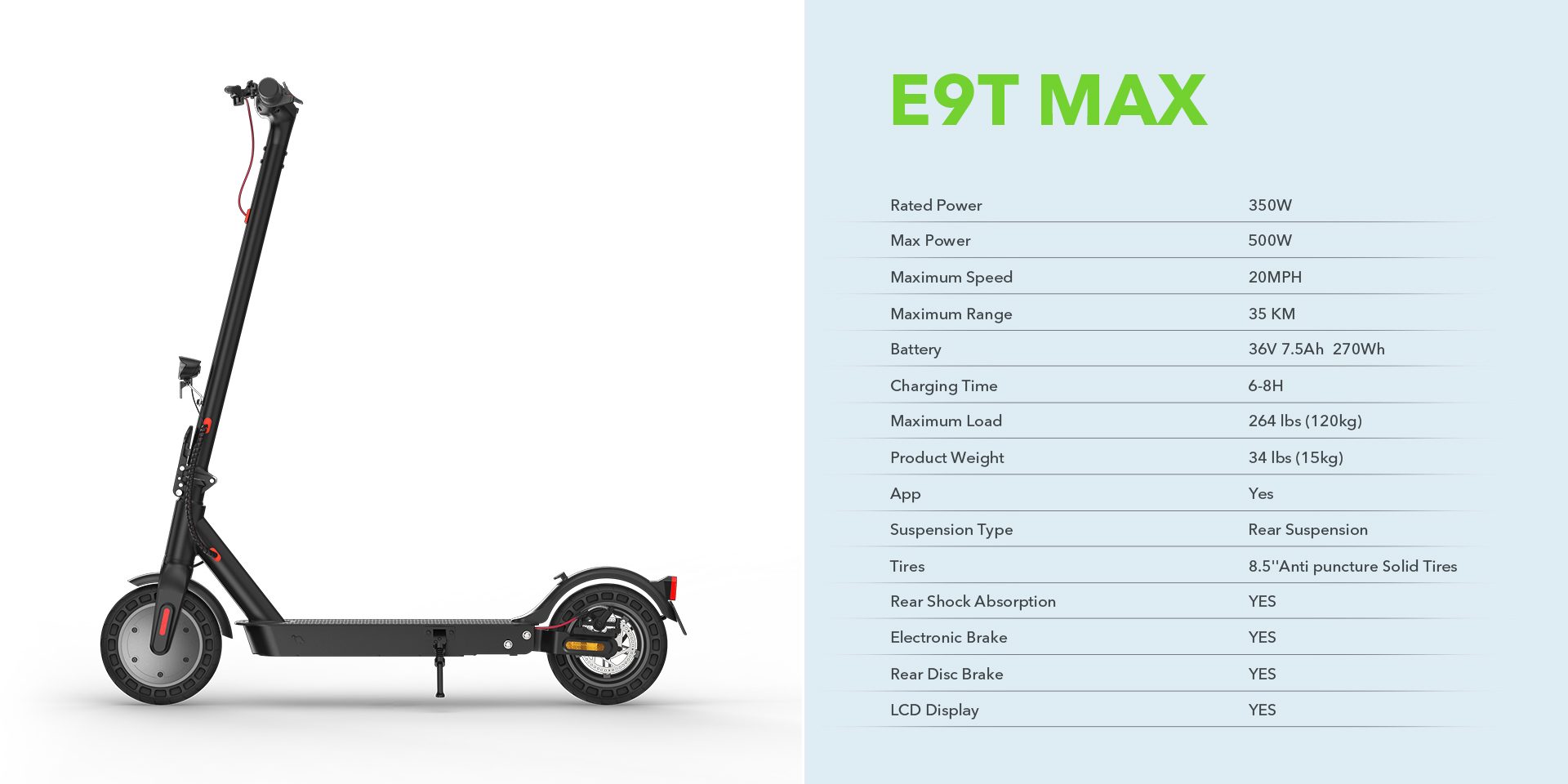Urban commuters are switching to electric scooters for eco-friendliness, cost-effectiveness, and efficient mobility.
The Rise of Electric Scooters
Electric scooters have surged in popularity in urban settings, revolutionizing the concept of personal mobility. Their rapid ascent is primarily due to their compact design, eco-friendly nature, and ability to navigate through congested cityscapes efficiently. The transformation from novelty items to mainstream urban transport solutions marks a significant shift in how city dwellers perceive and utilize transportation.
Understanding Electric Scooters: An Overview
Electric scooters, often hailed as the future of urban commuting, are battery-operated vehicles with a simple, user-friendly design. They typically consist of a handlebar, a deck to stand on, and two small wheels. The heart of an electric scooter is its electric motor, powered by a rechargeable battery, usually lithium-based. These scooters are known for their energy efficiency and cost-effectiveness, offering a green alternative to fossil-fuel-powered vehicles. A standard electric scooter can reach speeds of up to 15-20 mph, making short commutes faster and more convenient than traditional modes of transportation.
Key features include:
- Power: Average power ratings range from 250 to 2000 watts.
- Battery Life: Most models offer a range of 10-40 miles per charge, depending on the battery capacity, which usually lies between 250Wh to 500Wh.
- Cost: The price can vary significantly, from affordable $300 models to high-end versions costing upwards of $1000, catering to a broad spectrum of users.
- Size and Weight: Electric scooters are praised for their portability, with most weighing between 20 to 30 pounds and offering foldable designs for easy storage and transportation.
Key Milestones in the Adoption of Electric Scooters
The journey of electric scooters from obscurity to ubiquity is marked by several key milestones:
- Introduction to the Market: The early 2000s saw the introduction of electric scooters, but they were perceived more as leisure items rather than viable transportation options.
- Technological Advancements: Significant improvements in battery life, motor efficiency, and durability around the 2010s made electric scooters a more practical option for daily commuting.
- Rise of Scooter-Sharing Startups: Companies like Lime and Bird introduced scooter-sharing services in major cities, significantly increasing public exposure and acceptance.
- Regulatory Framework Development: As electric scooters became more popular, cities around the world started developing regulations to ensure safe and organized integration into urban transportation networks.
- Sustainability Movement: Growing awareness about environmental issues and urban planning challenges has led to the adoption of eco-friendly transportation options, with electric scooters being at the forefront due to their minimal carbon footprint and efficiency.
Technological Advancements and Innovations
Electric scooters continue to evolve rapidly, thanks to relentless innovation and technological advancements. Manufacturers and tech companies constantly push the boundaries to make electric scooters more efficient, convenient, and user-friendly. This section delves into the significant developments in battery technology, smart features, and what the future holds for electric scooter technology.
Isin S9Max
The S9 Max electric scooter boasts a powerful 500W motor, reaching speeds up to 20MPH with a 22-mile range. Featuring a 420Wh 42V 10Ah battery, it charges in 3-6 hours and supports loads up to 264 lbs. Weighing only 28 lbs, its IPX4 waterproof rating, 8.5in honeycomb tires, and dual shock absorption ensure a smooth ride.
Battery Life and Charging Solutions
One of the most critical components of an electric scooter is its battery, as it directly influences the scooter’s range, performance, and usability. Recent advancements have led to significant improvements in both battery life and charging solutions:
- Extended Battery Life: Modern electric scooters boast lithium-ion batteries known for their high energy density and longevity. Current models on the market offer an average range of 15-30 miles on a single charge, with top-tier models reaching up to 40-50 miles due to advancements in battery chemistry and management systems.
- Fast Charging: The time it takes to fully charge an electric scooter has significantly decreased. Innovative fast-charging technology allows users to charge their scooters up to 70% in just about 30 minutes, making electric scooters more practical for daily use.
- Swappable Batteries: Some manufacturers have introduced models with swappable battery systems. This feature allows users to carry an extra battery or easily replace a depleted one, virtually eliminating range anxiety and downtime due to charging.
Smart Features and Connectivity
Electric scooters are not just about the ride; they are also about the experience. Integration of smart features and connectivity has made electric scooters more interactive and safe:
- Mobile Integration: Most electric scooters now offer connectivity with smartphones through dedicated apps. These apps provide a multitude of functionalities, such as tracking the scooter’s location, monitoring battery levels, checking the distance traveled, and even locking or unlocking the scooter remotely.
- Safety Features: Advanced safety features, including LED lights for visibility, electronic locking systems to prevent theft, and even automatic emergency braking systems, have become standard in newer models, offering riders peace of mind.
- Telemetry and Performance Tracking: Some high-end models come with sophisticated telemetry features, allowing users to track performance metrics like speed, distance, battery usage, and ride statistics in real-time.
Future Trends in Electric Scooter Technology
The future of electric scooters looks promising, with several exciting trends on the horizon:
- Autonomous Technology: Research into autonomous technology for electric scooters is underway. This could lead to features like obstacle detection, auto-navigation, and even self-parking capabilities, revolutionizing how we interact with personal transport devices.
- Integration with Public Transport: Efforts to integrate electric scooters with public transportation systems are increasing. This integration will offer seamless last-mile connectivity, making urban commuting more efficient and less reliant on private vehicles.
- Greener Materials and Production: As sustainability becomes a global priority, electric scooter manufacturers are exploring greener materials and eco-friendly production methods. The focus is on reducing the carbon footprint throughout the lifecycle of the scooter, from production to disposal.
Case Studies: Electric Scooters in Major Cities
Electric scooters have made a significant impact on urban mobility across the globe. Major cities have adopted this mode of transportation, each with its unique approach and set of challenges. This section explores various case studies, highlighting success stories, lessons learned, and a comparative analysis of electric scooter implementation in different urban environments.
Isin E9T Max
The E9T MAX offers a powerful 500W max output, speeds up to 20MPH, and a range of 35KM. It boasts a robust 264 lbs load capacity, rear suspension, and 8.5″ solid puncture-resistant tires. With a compact weight of 34 lbs, it’s equipped with an LCD display and supports app integration. Ideal for swift urban commutes!
Success Stories and Model Implementations
Several cities have emerged as front-runners in successfully integrating electric scooters into their transportation ecosystems:
- Paris, France: Paris is a shining example of electric scooter integration. The city hosts multiple scooter-sharing companies and has invested in creating extensive bike lanes that scooter riders can also use. Parisian authorities focus on safety and proper parking to ensure scooters contribute positively to urban mobility.
- San Francisco, USA: After an initial period of regulation and adjustment, San Francisco has developed a robust electric scooter-sharing program. The city grants permits to a select number of operators, ensuring that the growth of scooter services is sustainable and in line with the city’s transit goals.
Lessons Learned and Best Practices
The adoption of electric scooters in cities has provided valuable insights:
- Importance of Regulation: Cities like San Francisco and Barcelona have shown that regulation is crucial. It’s essential to control the number of scooters and operators to prevent oversaturation and maintain public safety and order.
- Infrastructure Investment: Successful integration requires investment in infrastructure. Cities need to ensure adequate parking spaces for scooters and safe lanes for riders, as seen in Paris and Copenhagen.
- Public Awareness and Education: Educating the public about safe riding practices and parking norms is vital. Initiatives like free training sessions and safety campaigns can significantly enhance the positive impact of electric scooters.
Comparative Analysis of Different Urban Settings
The implementation and impact of electric scooters can vary significantly based on the urban setting:
- Population Density and Urban Layout: Cities with high population density and a compact urban layout, like New York, face different challenges compared to more spread-out cities like Los Angeles. The former may struggle with parking and pedestrian space, while the latter might deal with issues related to longer commuting distances.
- Existing Infrastructure: The presence of existing infrastructure for non-motorized vehicles can heavily influence the success of electric scooters. Cities like Amsterdam, with an already established cycling culture and infrastructure, have a smoother transition compared to cities that need to build this infrastructure from scratch.
- Regulatory Environment: The local regulatory environment plays a crucial role. Cities with proactive and adaptive regulations tend to manage the growth and challenges of electric scooters more effectively, ensuring that this mode of transportation adds value to the urban transit mix.
The Future of Urban Commuting with Electric Scooters
As urban areas continue to grow and evolve, electric scooters are becoming increasingly integral to the urban commuting landscape. The future of urban commuting with electric scooters looks promising, with potential for significant growth, innovation, and integration into the broader transportation network.
Isin R3
Powered by a robust 500W (peak 800W) motor, it reaches speeds up to 25km/h with a range of 35KM. Featuring a 48V 12.5Ah battery, it supports a 200kg load. With 10″ off-road tires, dual suspension, and advanced braking, it’s the ultimate urban ride.
Predicting Trends and Potential Disruptions
The electric scooter industry is poised for several exciting trends and potential disruptions:
- Advances in Battery Technology: Continued advancements in battery technology are expected to increase the range and efficiency of electric scooters. Future models may offer ranges exceeding 50 miles on a single charge, with battery lifespans extending beyond current averages.
- Autonomous and AI-Integrated Scooters: The integration of AI and autonomous technology could introduce self-driving electric scooters, capable of autonomous navigation and obstacle avoidance, revolutionizing the user experience and safety standards.
- Integration with Smart Cities: Electric scooters will likely become a key component of smart city ecosystems, offering connected, efficient, and on-demand transportation solutions, fully integrated with public transit systems and responsive to real-time urban conditions.
The Role of Policy and Urban Planning
Policy and urban planning will play a crucial role in shaping the future of electric scooters in urban areas:
- Infrastructure Development: Cities will need to invest in robust infrastructure, including dedicated scooter lanes, parking zones, and charging stations, to accommodate the growing number of electric scooter users.
- Regulatory Frameworks: Developing comprehensive and adaptive regulatory frameworks will be essential to manage the integration of electric scooters, ensuring safety, accessibility, and harmony with other modes of transportation.
- Incentives for Adoption: Governments may introduce incentives to encourage the use of electric scooters, such as subsidies, tax breaks, or grants, promoting a shift towards more sustainable and efficient urban transportation.
Embracing a Greener and More Efficient Urban Future
Electric scooters stand at the forefront of ushering in a greener and more efficient urban future:
- Reduced Carbon Footprint: By replacing gas-powered vehicles for short trips, electric scooters can significantly reduce urban carbon emissions, contributing to cleaner air and a more sustainable environment.
- Efficient Use of Urban Space: Electric scooters require less space than cars, easing urban congestion and freeing up space for green areas, pedestrian zones, and other community-enhancing developments.
- Promoting Healthier Lifestyles: The adoption of electric scooters encourages active mobility, promoting healthier lifestyles among urban residents and contributing to overall wellbeing.



